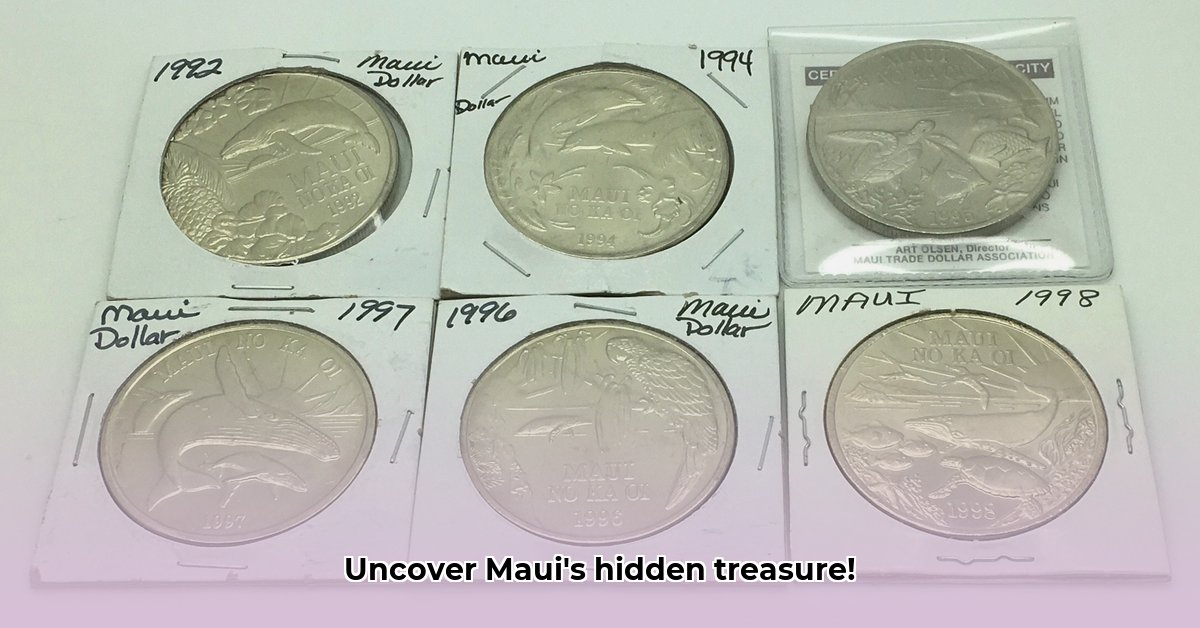
Maui Trade Dollars aren't your average currency; they're a captivating blend of numismatic history and Hawaiian cultural artistry. This comprehensive guide equips both novice and experienced collectors with the knowledge and strategies to confidently navigate this unique collecting field. We'll explore their history, delve into authentication techniques, and provide actionable steps to build a thriving collection.
History & Background: Unraveling the Mystery
The Maui Trade Dollar Association (MTDA) is the driving force behind these privately issued tokens (exonumia). While they claim to operate the longest-running exonumia program in the U.S., this assertion remains a subject of ongoing debate within the numismatic community. Regardless of the claim's veracity, the MTDA has created a diverse range of Maui Trade Dollars over decades, presenting collectors with a fascinating array of designs and series. Primarily featuring $1 and $2 denominations, these predominantly copper-nickel coins offer a glimpse into Hawaiian history and artistic expression. The ongoing discussions surrounding their origins only enhance their allure, inviting collectors to delve into their captivating story. The coins' diverse designs highlight the evolution of the MTDA's work and the artistic interpretations of Hawaiian themes over time.
Collecting Maui Trade Dollars: A Step-by-Step Guide
Embarking on a Maui Trade Dollar collecting journey is surprisingly accessible. Whether you're a seasoned numismatist or a curious beginner, this detailed guide will lead you through the process.
1. Define Your Collecting Focus: Begin by establishing your collecting goals. Will you strive for a broad collection spanning diverse series or a specialized collection focused on a particular design or series? This decision shapes your future collecting endeavors.
2. Master Series Identification: Each series boasts unique design elements. Thorough research – utilizing online resources, books, and community forums – is crucial for accurate identification. Pay meticulous attention to subtle variations in imagery and inscriptions. Are you familiar with the different design elements that distinguish various series?
3. Grading and Authentication: Safeguarding Your Investment: A coin's condition significantly impacts its value. Understanding grading standards (like those used by PCGS or NGC) is paramount. Mint state coins – in pristine, uncirculated condition – hold the highest value. For valuable coins, professional grading offers invaluable verification. Be vigilant against counterfeits; their presence necessitates careful authentication. Do you know how to differentiate authentic coins from expertly crafted counterfeits?
4. Intelligent Purchasing Strategies: Purchase coins only from established, reputable sources – reputable coin dealers, secure online marketplaces (with buyer protection where possible), and well-vetted numismatic shows. Avoid sellers lacking verifiable histories or those offering deals that seem too good to be true. Where do you plan to source your Maui Trade Dollars?
5. Conservation Strategies for Long-Term Value: Proper storage is essential for preserving the value and condition of your collection. Individual coin holders provide protection against scratches and environmental damage. Store your collection in a stable, climate-controlled setting, away from excessive heat, humidity, and direct light. How do you intend to protect your valuable collection from environmental damage and deterioration?
6. Building a Collection Methodically: Start with a manageable number of coins. Gradual expansion allows for thorough research and appreciation of each acquisition. A strategic approach, such as completing a series, proves more rewarding than haphazardly accumulating coins. What's your plan to methodically build a collection of Maui Trade Dollars?
Market Value and Investment: Navigating the Fluctuations
Precisely determining the market value of a specific Maui Trade Dollar is challenging. Several factors play a pivotal role:
- Rarity: Less common series naturally command higher prices.
- Condition: Pristine, uncirculated coins are substantially more valuable than those exhibiting wear.
- Series Popularity: Some series are more sought-after, impacting prices.
- Market Trends: Demand heavily influences value.
Remember, the market is inherently volatile. Avoid impulsive buys based solely on speculation. Thorough research and due diligence are paramount. Price ranges, obtained from reputable sources, provide a more reliable guideline than fixed values. Have you considered the inherent market volatility when planning your investment?
Risk Assessment and Mitigation
Collecting Maui Trade Dollars, like any collecting pursuit, presents inherent risks. Understanding these risks and implementing mitigating strategies ensures a secure and satisfying collecting experience.
Potential Risks & Mitigation Strategies:
| Risk Category | Mitigation Strategy |
|---|---|
| Counterfeit Coins | Purchase from reputable sources only; utilize professional authentication services when needed. |
| Market Volatility | Diversify your collection; avoid over-investing in any single coin or series. |
| Information Gaps | Engage with online communities and utilize reputable numismatic resources for in-depth research. |
| Improper Storage | Employ appropriate protective storage: airtight capsules, stable environment, minimal handling. |
Conclusion: Embarking on Your Maui Trade Dollar Journey
Collecting Maui Trade Dollars offers a unique adventure, combining numismatic exploration with a glimpse into Hawaiian culture and history. By understanding the unique aspects of these coins, applying sound collecting practices, and employing appropriate risk mitigation strategies, you can cultivate a rewarding and valuable collection. The journey itself — filled with learning, discovery, and community engagement — is as fulfilling as the coins themselves.